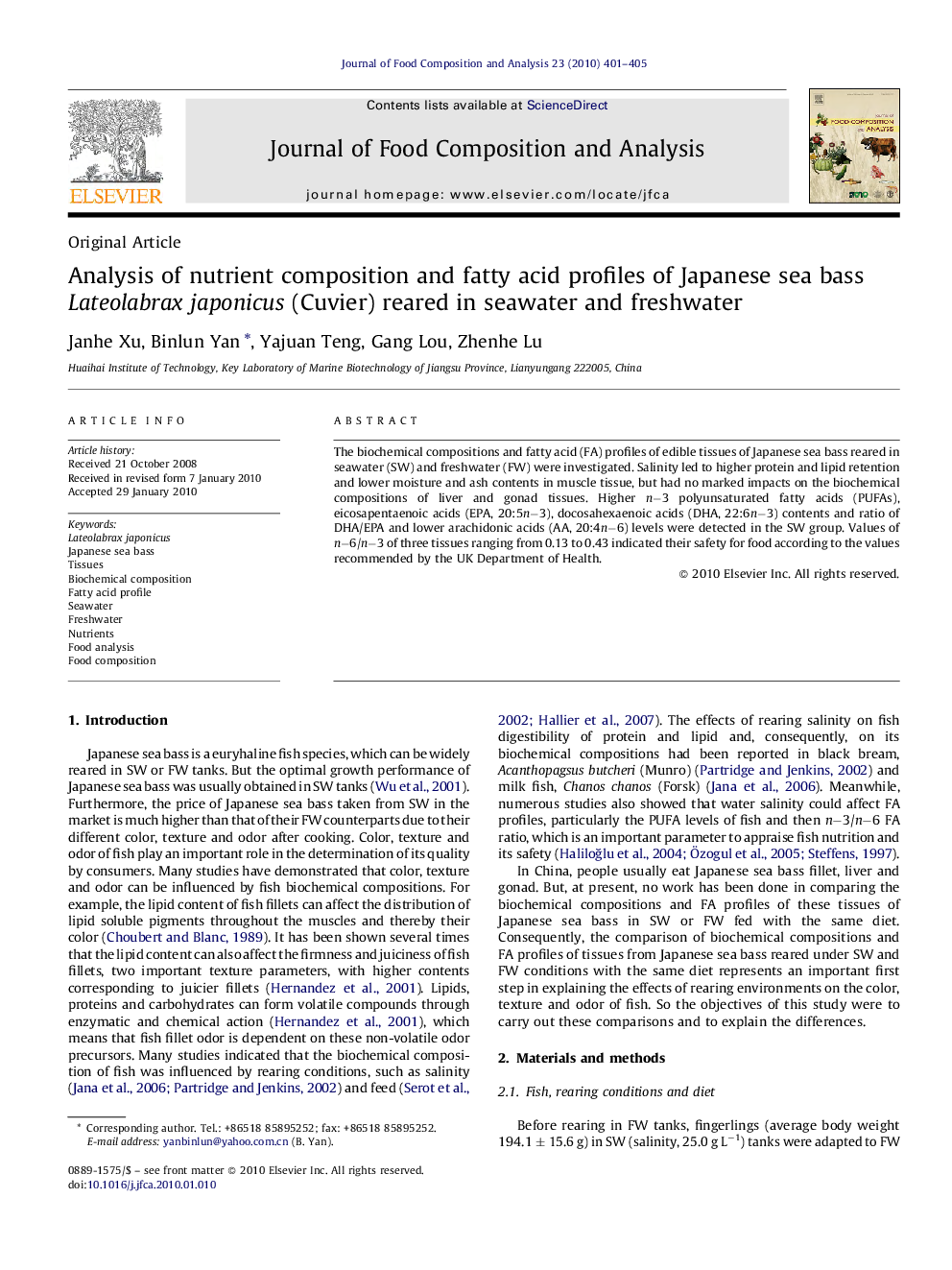| Article ID | Journal | Published Year | Pages | File Type |
|---|---|---|---|---|
| 1218533 | Journal of Food Composition and Analysis | 2010 | 5 Pages |
Abstract
The biochemical compositions and fatty acid (FA) profiles of edible tissues of Japanese sea bass reared in seawater (SW) and freshwater (FW) were investigated. Salinity led to higher protein and lipid retention and lower moisture and ash contents in muscle tissue, but had no marked impacts on the biochemical compositions of liver and gonad tissues. Higher n−3 polyunsaturated fatty acids (PUFAs), eicosapentaenoic acids (EPA, 20:5n−3), docosahexaenoic acids (DHA, 22:6n−3) contents and ratio of DHA/EPA and lower arachidonic acids (AA, 20:4n−6) levels were detected in the SW group. Values of n−6/n−3 of three tissues ranging from 0.13 to 0.43 indicated their safety for food according to the values recommended by the UK Department of Health.
Keywords
Related Topics
Physical Sciences and Engineering
Chemistry
Analytical Chemistry
Authors
Janhe Xu, Binlun Yan, Yajuan Teng, Gang Lou, Zhenhe Lu,
